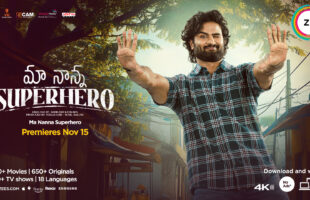TV viewing behaviour is changing. Again.
Research and the personal experience of many people tells us that while viewers are watching their main TV screen (the first screen), more than ever before they are watching other screens simultaneously – including tablets, laptops and other mobile devices.
How prevalent is this trend?
According to a survey conducted for the Nielsen Wire*, in the US, 88 percent of tablet owners and 86 percent of smart phone owners used their devices while watching TV at least once in the previous month. For those with tablets, 45 percent used their device while watching TV on a daily basis and 26 percent used it simultaneously while watching TV several times a day. Smart phone owners also exhibit simultaneous usage with 41 percent saying they used their phone at least once a day while watching TV.
Who is most likely to be at the vanguard of multiple-screen usage? According to the Cable & Telecommunications Association for Marketing in the US (CTAM)**, 18 – 34 year old consumers in the US already multi-task while watching TV.
How can Asian content providers and pay TV operators get a piece of the action?
The examples above include activities that could either complement core pay-TV offerings or distract from them. Both content providers and pay TV operators are keen to enable experiences that provide a complementary viewing experience and there are a number of ways to do so.
Worldwide, a number of content providers including HBO in the US (HBO Go), Zee in India (Ditto TV) and a number of pay TV operators including Cox Communications (TV Connect) in the US and BSkyB (SkyGo) in the UK have launched over-the-top video services for connected devices that provide access to selected TV content.
To provide an example, as part of its multi-platform service, BSkyB has made a wide selection of premium content available to its subscribers under the SkyGo brand. NDS’ VideoGuard Connect enables Sky to deliver content authorised to a user’s subscription to Android devices, iPhones, iPads and the iPod Touch. VideoGuard Connect uses content delivery optimisation technology from NDS to enable SkyGo to offer a high-quality live TV experience when on the move in the UK and Ireland, via 3G or Wi-fi. The service includes both linear streaming and on-demand content from some of BSkyB’s most popular channels and bundles including access to Barclays Premier League football and a wide selection of films.
More than one screen
Why would viewers want to use more than one screen at a time? There are a number of reasons; the traditional lean-back TV experience provides the viewer with the capacity to do other things, but accessibility and the ability to use connected portable devices in such flexible ways are the core drivers.
From a television perspective, there are two main ways that second screens can enrich the TV experience. This could mean streaming of TV content to devices as a TV-like offering or providing complementary second screen applications on those devices that interact with or enrich what is happening on the main screen.
The paradigm of “anytime, anywhere, any device” is now a reality; with the growing availability of bandwidth and the flux in connected media – ready devices entering the market on a daily basis, the industry has reached a perfect storm to enable TV content services on devices – whether streaming or downloading, these services provide access to subscriber content on-the-go, and an opportunity for the operator to fulfill the subscriber appetite for entertainment.
There is a wealth of content and information available that can enrich the TV viewing experience that isn’t necessarily appropriate or formatted for viewing on the TV. Most popularly, social engagement around TV shows, whether recommendations from friends, or conversations around a programme on social networks that provide those “watercooler moments” where people congregate to talk about a specific event. These elements exist, but without the context to link them to what is currently being viewed – that is where the potential lies. If your device knows what you are watching, it can provide contextuality to second screen use.
Challenges posed by Second Screens
1. The first challenge is enabling the experience. Whether by overcoming delivery and/or the adaptation of TV content for small screens with varying resolutions and aspect ratios, or creating services that interact with content on the main screen.
2. Second, but paramount to any multi screen service is security. Content owners are cautious about the usage of their content on unsecured devices, over unmanaged networks – and rightly so. Without adequate protection of their content assets, they are open to theft and misuse.
But it’s not only about the content. It’s also about the service. Making sure that Second Screen content is as secure as content on the viewer’s set-top box. With settop boxes operators know who their subscribers are and what channels they are entitled to access, but with portable devices the same parameters are not in play – the model changes and operators have to implement measures such as user and device registration and renewable security that ensures that the operator’s service is always secured.
3. Addressability and measurement across multiple screens hold great potential. Well established systems to measure viewing on “first” screens have been developed over several decades and are being deployed across leading pay-TV platforms around the world. Systems to measure viewing on Second Screens are still in their infancy, but the potential for combining measurement of viewing on both primary and secondary screens into one set of metrics is undeniable – essentially enabling operators and advertisers to utilise additional inventory, create multi-platform campaigns and further monetise viewing.
4. With TV services now becoming available on multiple screens, the challenge is to unite the experience and make the subscriber feel that they are receiving added value from their service – whatever the device. The service can be enriched in a number of ways, whether by enabling a subscriber to start watching on one device and finish on another, or by providing added value interactivity.
A survey conducted for the Nielsen Wire*** in the US showed that of the tablet and smartphone owners who were using their devices whilst watching TV, 29% were looking up information related to the TV programme. The challenge and the opportunity for the operator is to develop a mechanism that will enable direct action from the device to affect programming on the main screen – for example, booking a programme to the DVR through a recommendation on a social network, or an online TV guide.
What does this mean?
There is tremendous opportunity. Operators are in a position to generate additional revenue from multi -platform services by offering more interaction, more engagement with viewers and more viewing potential.
For the subscriber, multi-platform services mean greater flexibility and access to what they want to watch, when they want to watch it and where.
This story is contributed by Fabien Gauthier, Director Business Strategies and Partnerships, AP, Sales and Account Management, NDS Ltd.
* Source: Nielsen, April 2012
** Source: Cable & Telecommunications Association for Marketing, November, 2011
*** Source: Nielsen, October, 2011







